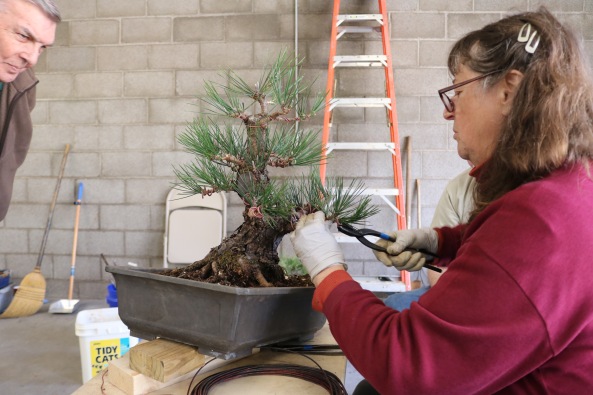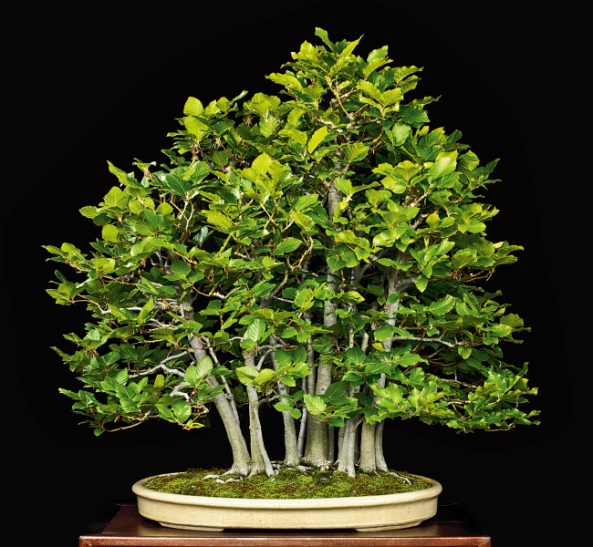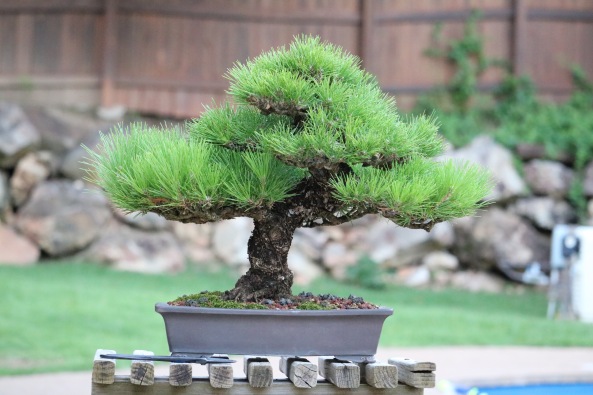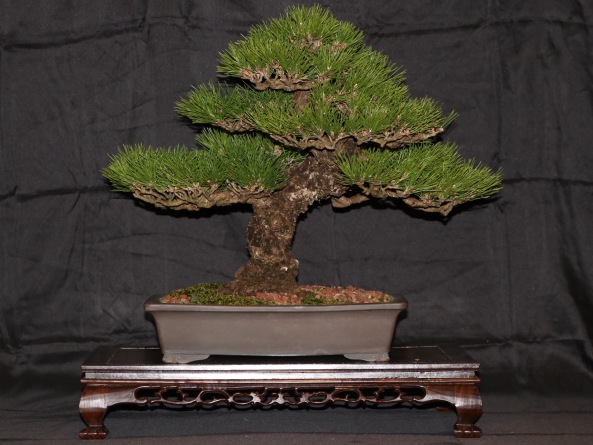This is the Arakawa variety of JBP. Not a Nishiki cultivar, but a rough barked variety. The bark is nice and rough, but so far, rather flaky and not yet persistent. That’s ok, the bark will improve as the tree is refined. I chose a front and completed the first styling in March 2016:
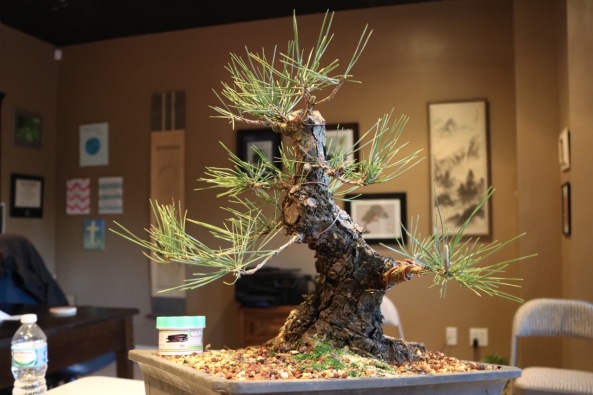
and took it to a Kathy Shaner workshop in March 2017:

I started with cleaning out old needles, and reducing each shoot to a pair of buds and 10-12 pairs of needles:
Getting it into an easy-to-wire state:

Which I did, and Kathy adjusted:
And here is the end result for now:
Notice the trunk has been tilted to the right a bit? I started by excavating the left side to confirm the base would look good at this angle. With it confirmed, I repotted it the following weekend:
I broke down the left side of…
View original post 28 more words


